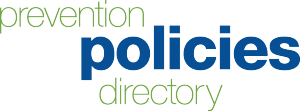Prevention Policies Directory supports change at local level to improve lives of Canadians
Bylaws for eight risk factors in 31 municipalities added
November 14, 2013
 More than one in three Canadians will be diagnosed with cancer in their lifetime. Yet the World Cancer Research Fund estimates that a full third of cancer cases can be prevented by eliminating tobacco use, and another third avoided by a combination of eating nutritious food, limiting alcohol consumption, participating in regular physical activity and maintaining a healthy body weight.
More than one in three Canadians will be diagnosed with cancer in their lifetime. Yet the World Cancer Research Fund estimates that a full third of cancer cases can be prevented by eliminating tobacco use, and another third avoided by a combination of eating nutritious food, limiting alcohol consumption, participating in regular physical activity and maintaining a healthy body weight.
While Canadians can take steps on their own to try to prevent these cancers, healthy public policies such as banning smoking on all city property or keeping junk food out of public buildings are just a few ways local governments can influence the health of residents directly, and help to reduce their risk of getting cancer.
Dan Steeves, Health Promoter and Team Lead at the Capital Health Addictions and Mental Health Programs in Nova Scotia, has seen firsthand how these policies can serve as catalysts to address complex public health challenges. He points to tobacco control as a prime example.
“From 2001 to 2008, many municipalities started enacting bylaws to create tobacco-free spaces. That inspired our provincial government to enact legislation to make sure there was a level playing field across all municipalities. Today in Nova Scotia, smoke free spaces are the norm and we can thank municipal smoking policies for inspiring the province,” Steeves said.
The Canadian Partnership Against Cancer’s Prevention Policies Directory brings together cancer and chronic disease prevention policies from over 50 Canadian sources in a searchable online tool. It was created to support public health professionals, academic researchers and policy specialists, such as Steeves, as they work to create healthier communities through policy change.
“Very recently, our city council was debating whether to take all alcohol advertising off city buses. We used the Directory to discover that Saskatoon had a municipal bylaw banning alcohol advertising on city-run buses. That was extremely helpful – in the past, we would have had to do a Google search or started calling around,” Steeves said.
The Partnership continues to expand the breadth and number of policies indexed in the directory. Over the past year, the Partnership collaborated with the Urban Public Health Network to add policy information for 31 municipalities to the Prevention Policies Directory.
“Policy often acts as a catalyst to promote healthy behaviours and address complex public health challenges,” said Deb Keen, Director of Prevention and Research at the Canadian Partnership Against Cancer. “With the addition of municipal policies to the Prevention Policies Directory, we’re providing health professionals and policy specialists with information on what has worked in other jurisdictions to help create supportive environments for Canadians to make healthier choices and therefore reduce their cancer risk.”
The Partnership launched the Prevention Policies Directory in 2010 to facilitate better understanding of Canada’s policy landscape. It is the only searchable database in Canada that collects and disseminates policies and laws relating to all the modifiable risk factors for cancer and chronic disease – alcohol consumption, the built environment, infectious agents, nutrition, occupation and environmental exposures, physical activity, tobacco use, and UV and ionizing radiation.
Visit the Prevention Policies Directory.
